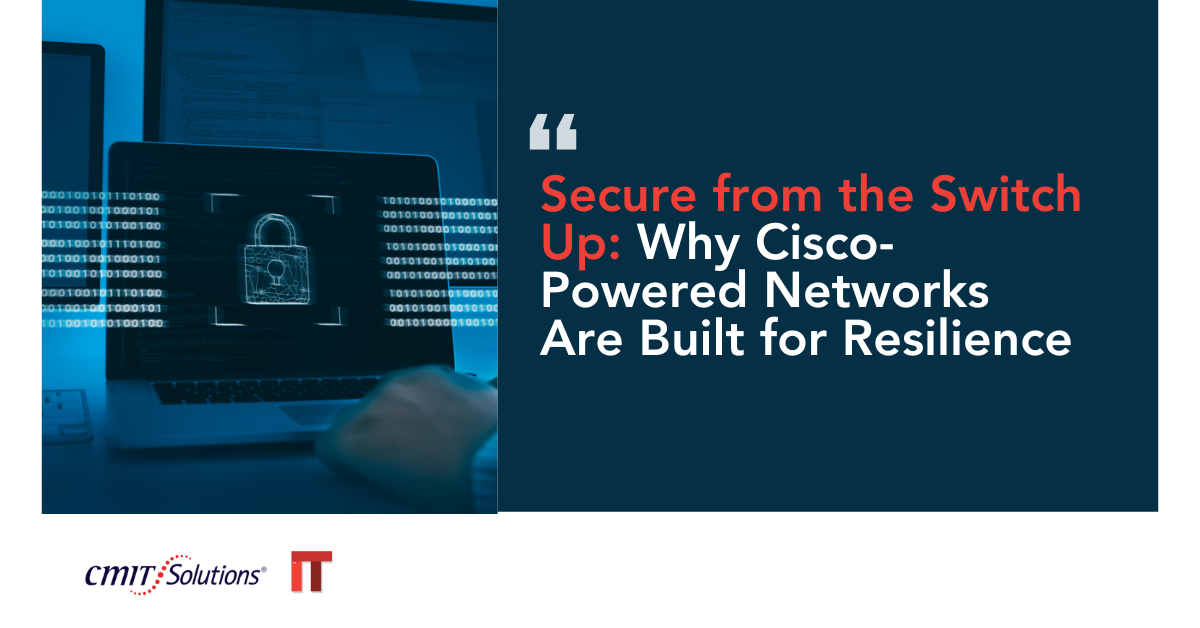In a business world where connectivity is the backbone of productivity, a network outage can bring operations to a standstill. From remote work to cloud-based applications, companies rely on stable and secure connections more than ever before. This is why many organizations are turning to Cisco-powered networks not just for performance, but for the resilience needed to keep businesses running without disruption.
Cisco’s networking solutions are designed with redundancy, advanced security, and intelligent automation in mind. The result? Networks that can adapt to change, withstand threats, and recover quickly from potential failures.
What Makes a Network Resilient?
A resilient network is more than just a fast connection it’s an infrastructure that can withstand unexpected disruptions, adapt to new demands, and recover without impacting productivity. Cisco achieves this through:
- Redundant pathways to keep data moving during hardware failures.
- Automated failover to minimize downtime.
- Integrated security that detects and blocks threats in real time.
These principles align closely with best practices in network management, ensuring systems remain operational even under stress.
The Cisco Approach to Resilient Networking
Cisco’s resilience strategy focuses on layered protection and intelligent automation. The technology combines advanced routing, switching, and monitoring to maintain high availability.
Key components include:
- Modular architecture that allows seamless scaling.
- Zero Trust security to protect from internal and external attacks.
- AI-powered analytics to predict and prevent issues before they occur.
This proactive stance mirrors the benefits of smart technology that not only supports current needs but anticipates future challenges.
Built-In Security from the Ground Up
Network resilience isn’t just about uptime—it’s also about maintaining security during disruptions. Cisco integrates enterprise-grade protection directly into its networking hardware and software.
This includes:
- Segmentation to isolate threats.
- Advanced threat detection using machine learning.
- Secure access controls with passkeys and multi-factor authentication.
These features align with best-in-class cybersecurity strategies to safeguard against breaches that could otherwise exploit downtime.
Why AI Plays a Role in Network Resilience
Modern networking is as much about intelligence as it is about hardware. Cisco uses AI-driven insights to monitor performance, predict failures, and optimize traffic.
This is similar to how AI security tools can spot anomalies in real time. The AI engine learns from patterns, automatically adjusting configurations to prevent bottlenecks or outages before they happen.
Disaster Recovery: Keeping Data Accessible
Resilience also means having a plan for recovery. Cisco-powered networks integrate seamlessly with cloud backups, ensuring that if a local disruption occurs, data remains accessible from alternative locations.
This capability reduces downtime and ensures business continuity, whether facing a natural disaster, cyberattack, or equipment failure.
Zero Trust as a Networking Standard
Cisco has adopted the Zero Trust framework across its solutions, applying strict verification to every user and device. This ensures that even if attackers gain network access, they cannot move freely within the environment.
Zero Trust policies are especially valuable when combined with tools like MDR and SIEM for centralized monitoring and incident response.
Why SMBs Need Managed IT for Cisco Networks
Small and midsized businesses often underestimate the complexity of maintaining a high-resilience network. Partnering with a provider experienced in proactive IT support ensures Cisco solutions are deployed and managed to their fullest potential.
Benefits include:
- Continuous performance monitoring.
- Rapid response to hardware or software issues.
- Strategic network scaling aligned with business growth.
Real-World Threats Resilience Can Mitigate
Cisco-powered resilience can help prevent:
- DDoS attacks that attempt to overload systems.
- Phishing-based breaches mitigated by integrated AI-powered prevention.
- Insider threats contained by network segmentation and access controls.
By combining intelligent security layers with redundancy, these networks protect both uptime and sensitive data.
What Happens Without Network Resilience
Without a resilient network, companies risk:
- Prolonged outages during hardware or ISP failures.
- Increased vulnerability during recovery periods.
- Lost revenue from operational downtime.
As seen in major breach incidents, attackers often exploit weaknesses that emerge during outages.
Conclusion: Cisco Networks as a Resilience Standard
Resilience is no longer optional it’s the baseline for any modern network. Cisco-powered infrastructure offers the combination of redundancy, intelligence, and security that businesses need to keep moving, no matter what challenges arise.
By integrating AI insights, Zero Trust policies, and proactive management, these networks aren’t just built to function they’re built to adapt, protect, and recover. For organizations looking to future-proof their connectivity, Cisco delivers the infrastructure that turns resilience into a competitive advantage.






